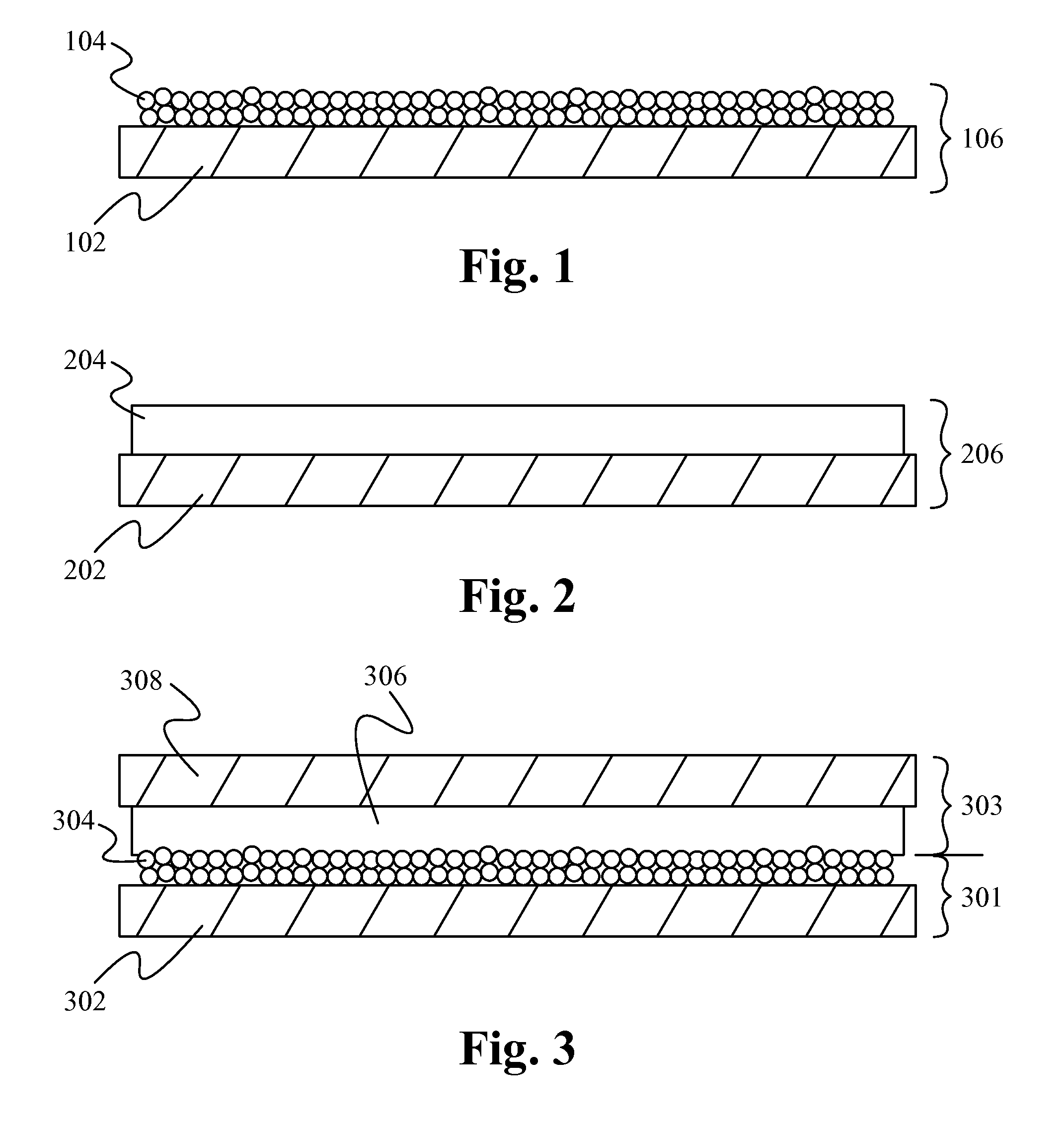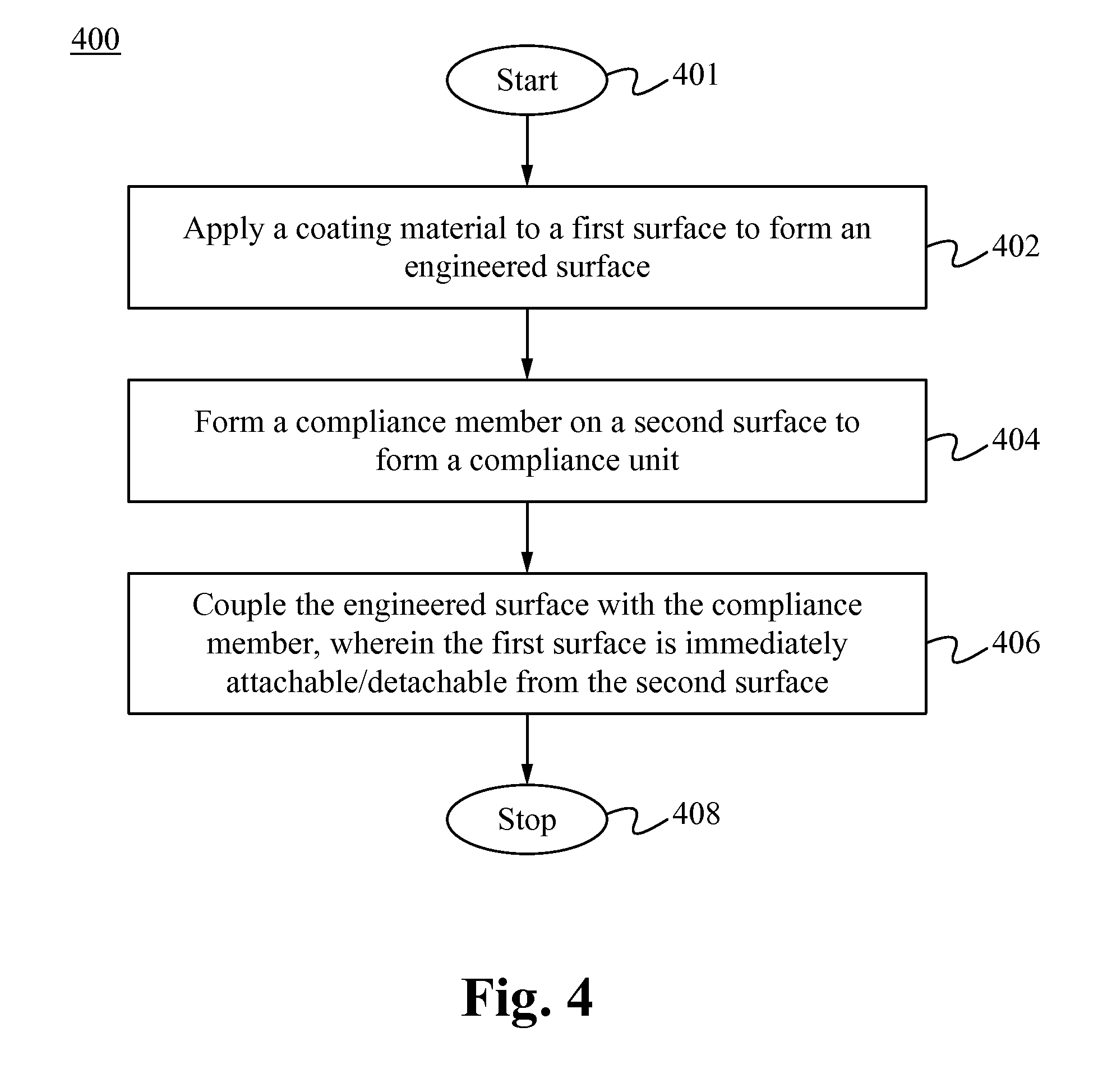Dry adhesive
a technology of adhesives and adhesives, applied in the field of adhesives, can solve the problems of long cure time of adhesives, limited pot life, toxic, etc., and achieve the effect of reducing the adhesion for
- Summary
- Abstract
- Description
- Claims
- Application Information
AI Technical Summary
Benefits of technology
Problems solved by technology
Method used
Image
Examples
example a
Clear Compliant Member of Silicone
[0065]In a non-limiting example, a clear compliant member with a 16 Shore A is prepared using 100 parts Dow Corning 9600 base, 3 parts Dow Corning 9600 catalyst, and 3 parts Dow Corning SL 9106 coating. The components are weighed, mechanically mixed, formed to desired shape, and cured at 120° C. for one minute to produce a clear compliant member with a 16 Shore A hardness.
example b
Filled and or Colored Compliant Member of Silicone
[0066]In another non-limiting example, a colored compliant member is prepared using components from Example A. However, the Dow Corning 9600 base concentration needs to be adjusted proportionally to the masterbatch color added. For example, to produce a white compliant member a white masterbatch with 50% TiO2 is able to be added. The white masterbatch is available from Dow Corning LPX Liquid Color Masterbatches. If 24 parts of the white masterbatch is added, the Dow Corning 9600 base needs to be adjusted proportionally to 76 parts. Alternatively or additionally, color masterbatches are employed to produce a wide range of color.
example c
Conductive Compliant Member with Additions
[0067]In another non-limiting example, a conductive compliant member is prepared using components from Example A. Conductive materials, such as indium tin oxide, graphene, carbon nanotube, silver, copper, and / or gold nano-particles, are added to example A in effective concentration to produce conductive compliant member. The term “conductive” is able to include thermal, electrical, vibrational, signal, and / or for a purpose of antistatic. Other additives are able to include scents, molecular components, thermal indicators, various nanosensors, and biomaterials. Thin layers are able to be used to prevent outgassing of polymer components.
[0068]Silicone rubber is able to be employed to formulate compliant member with a range of physical properties. A catalyst such as platinum is able to be employed to increase curing rate and / or crosslink density of the rubber. Colorants are able to be employed to increase opacity of the compliant member and / or ...
PUM
| Property | Measurement | Unit |
|---|---|---|
| time | aaaaa | aaaaa |
| size | aaaaa | aaaaa |
| softening points | aaaaa | aaaaa |
Abstract
Description
Claims
Application Information
 Login to View More
Login to View More - R&D
- Intellectual Property
- Life Sciences
- Materials
- Tech Scout
- Unparalleled Data Quality
- Higher Quality Content
- 60% Fewer Hallucinations
Browse by: Latest US Patents, China's latest patents, Technical Efficacy Thesaurus, Application Domain, Technology Topic, Popular Technical Reports.
© 2025 PatSnap. All rights reserved.Legal|Privacy policy|Modern Slavery Act Transparency Statement|Sitemap|About US| Contact US: help@patsnap.com



